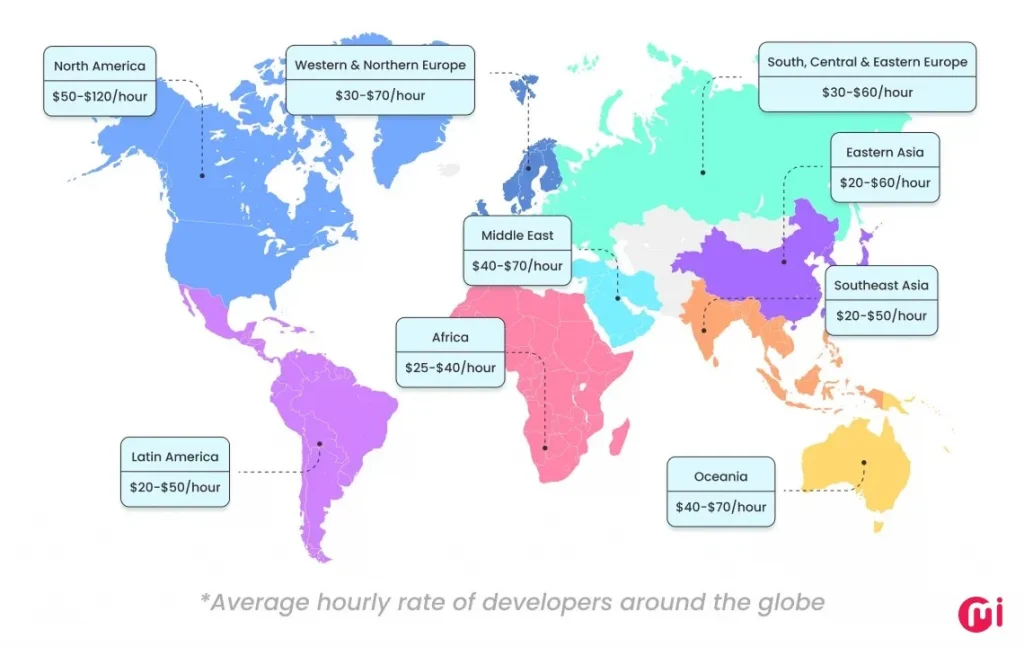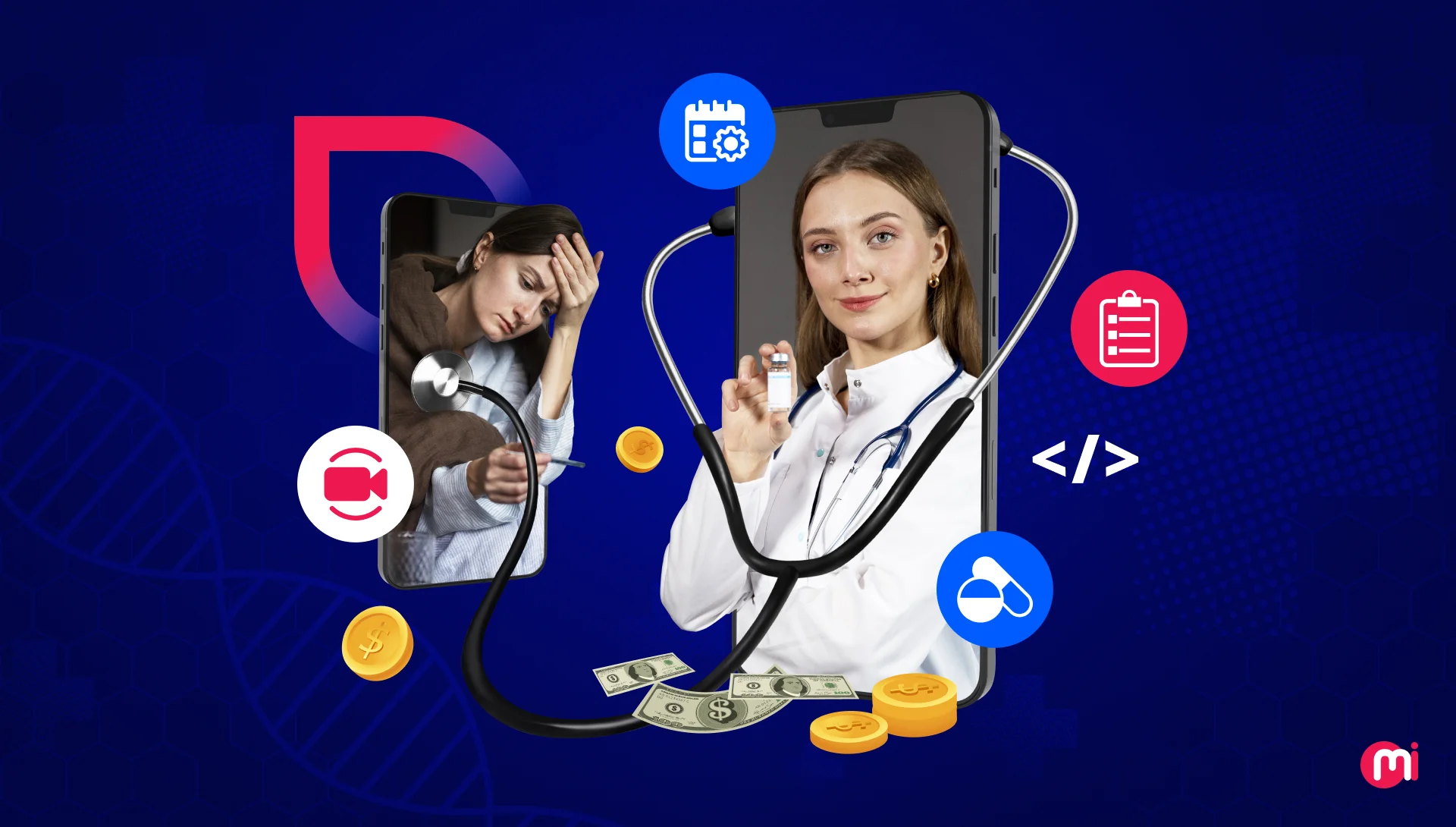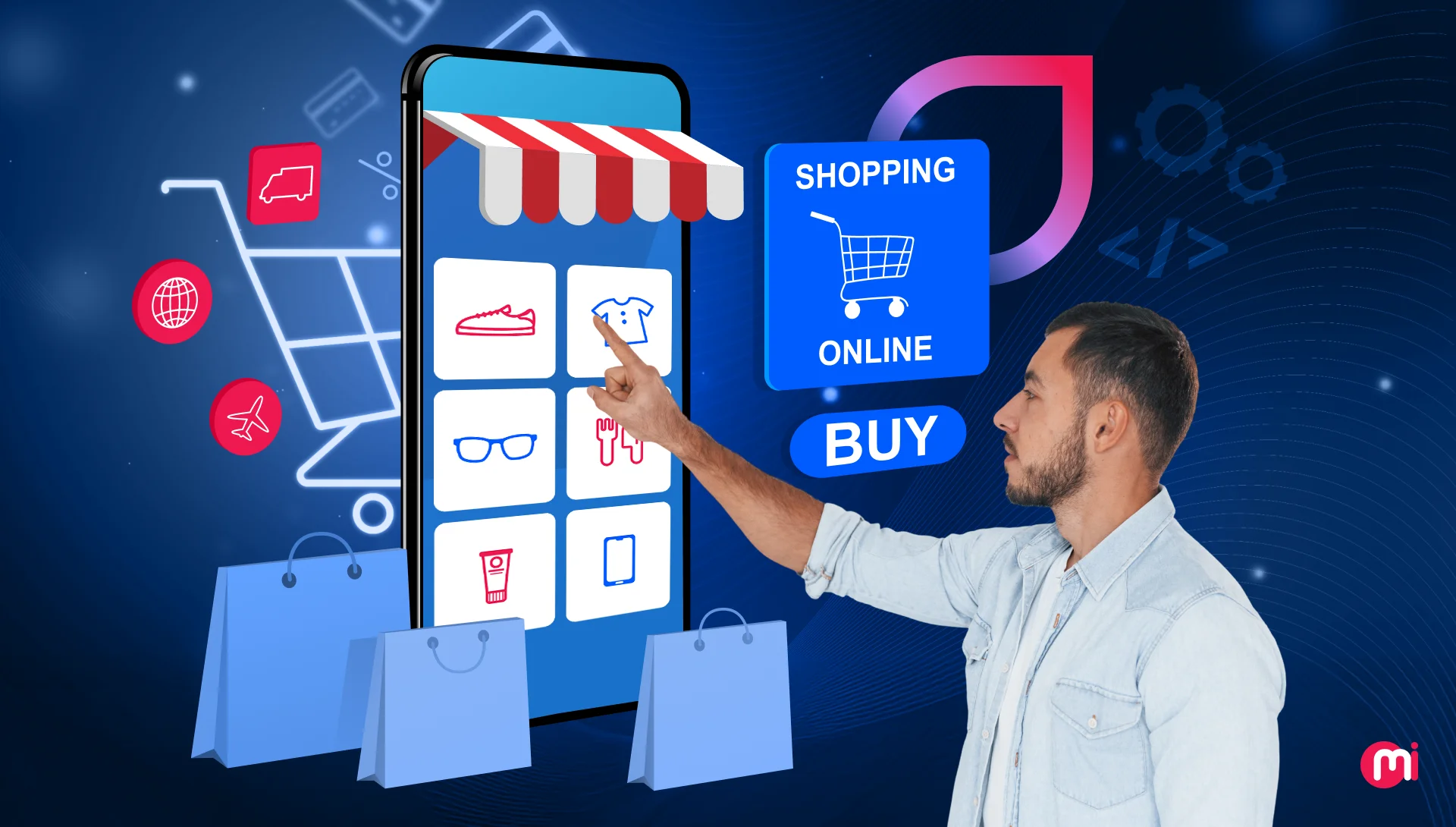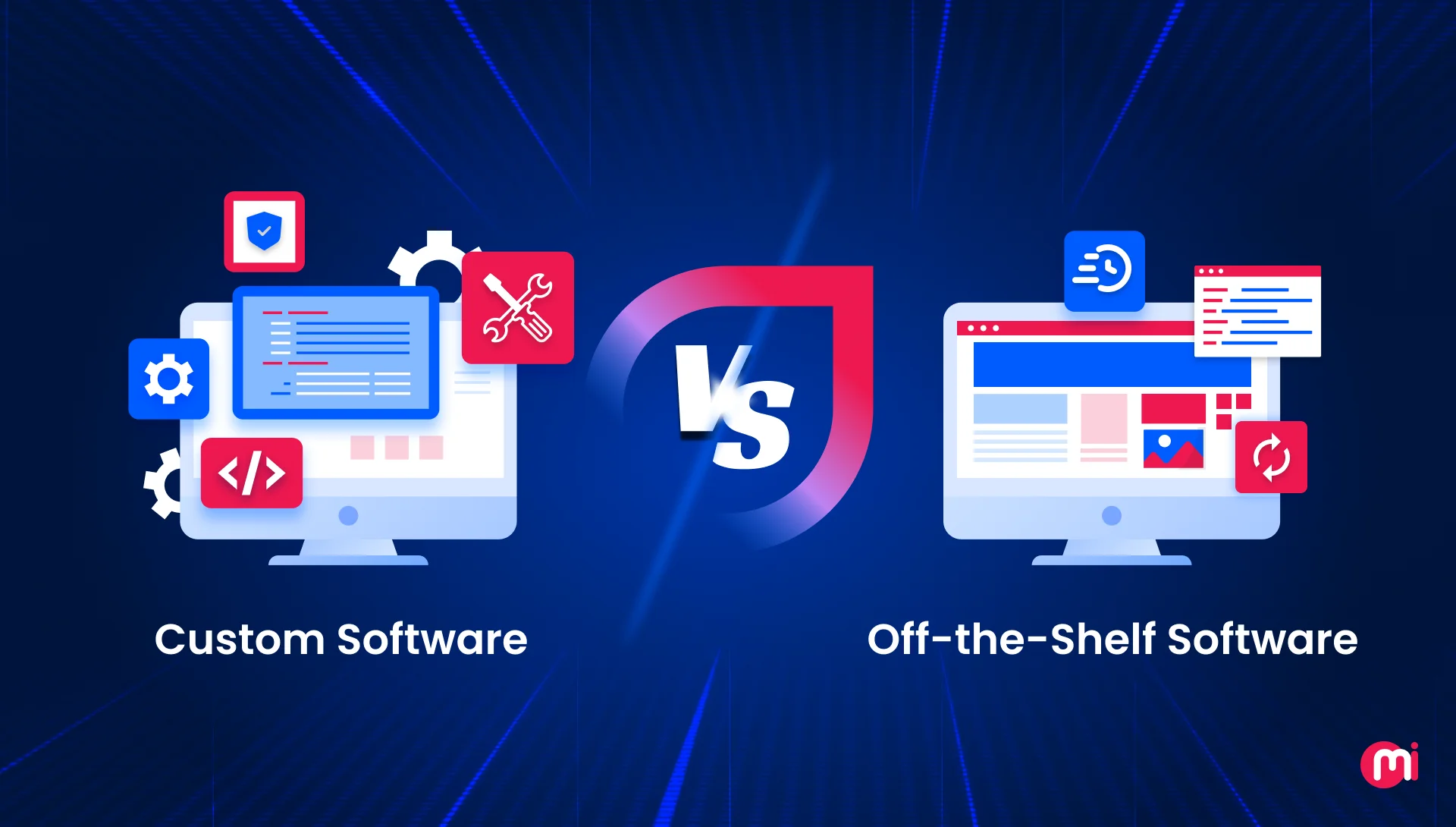Telemedicine App Development Cost Breakdown and Estimates
- Mobile
- October 2, 2025
With patients increasingly relying on digital consultations, remote monitoring, and online prescriptions, telemedicine app development has become a powerful way to reach more people and improve healthcare outcomes. But while the concept is exciting, one question often stops innovators in their tracks: how much does telehealth software cost?
Telemedicine app development costs can vary widely depending on features, platform choice, design, technology stack, integrations, and compliance requirements. Without a clear understanding, budgeting can feel overwhelming and risky.
Key Takeaways
- Development Cost: The cost to build a telemedicine app varies widely, typically ranging from $40,000 to $300,000+, depending on features, platform, and scale.
- Market Insights: BMC Health Services Research reports that 80% of patients using telemedicine for primary care are consistently satisfied with the quality of care.
- Advanced Features: Video consultations, e-prescriptions, appointment management, and AI diagnostics significantly increase development costs.
- Regulatory Compliance: Privacy, security, and adherence to healthcare regulations (like ISO 27001, HIPAA, HITECH, HL7, PHIPA, SaMD, DICOM, GDPR, PCI DSS, etc.) are major cost drivers in app development.
- Optimization Techniques: MVPs, cross-platform apps, APIs, cloud, smart outsourcing, and automated testing reduce costs.
This blog gives you a detailed estimation of telemedicine app development costs, breaking down all the key factors and providing realistic price ranges. By the end, you’ll have a clear roadmap to plan your investment, avoid surprises, and make informed decisions for your healthcare app project.
What is Telemedicine App Development?
Telemedicine app development is the process of developing apps that enable patients and healthcare providers to connect remotely. These apps allow video consultations, appointment scheduling, prescription management, and health record tracking. They streamline communication between patients and doctors while reducing the need for in-person visits. Ultimately, these apps make healthcare more accessible, efficient, and convenient for everyone.

Telemedicine App Growth: A Market Overview
The global telehealth and telemedicine market is projected to expand from $94.14 billion in 2024 to $180.86 billion by 2030, growing at a compound annual growth rate (CAGR) of 11.5%.
In the United States, the telehealth market was valued at $42.54 billion in 2024 and is expected to grow at a CAGR of 23.8% between 2025 and 2030, reflecting strong adoption and demand for digital healthcare solutions.
Over the next five years, healthcare organizations will increasingly rely on healthcare software development services as:
- McKinsey says that 55% of patients feel that telehealth provides better quality care compared to traditional in-office visits.
- J.D. Power reveals 94% of users who have experienced digital healthcare say they would use it again.
- GlobalMed reveals that 74% of millennials prefer telehealth visits over traditional in-person doctor appointments.
- Rock Health says that 73% of rural residents regularly use telemedicine to access healthcare services.
- PubMed reveals that 96% of telepsychiatry patients report being satisfied with virtual mental health care.
Also Read: Telemedicine App Development Guide.
How Much Does Telemedicine App Development Cost?
The cost of telemedicine app development starts from $40,000 and reaches up to $300,000+. The final cost depends on factors such as app complexity, feature set, the development team’s location and expertise, and required third-party integrations like Electronic Health Records (EHR).
A basic Minimum Viable Product (MVP) with core features like video consultations falls on the lower end of the spectrum, while a full-featured platform with advanced capabilities, such as AI tools, remote patient monitoring, and extensive integrations, can drive costs toward the higher end.
Telemedicine App Development Cost Estimation based on app complexity:
| Project Size | Cost |
| Basic App | $40,000-$75,000+ |
| Mid-Level App | $75,000-$120,000+ |
| Enterprise App | $120,000-$300,000+ |
Telemedicine App Development Cost Breakdown Based on Development Stages
Telemedicine app development cost depends on several key stages, including discovery and planning ($5k – $15k+), design ($10k – $30k+), development ($20k – $100k+), testing ($5k – $15k+), etc. Along with it, deployment and launch ($25 – $99+), and ongoing app maintenance (15% – 20%+ of development budget) also add up to cost. Each stage plays a vital role in shaping the overall budget and ensuring the app’s success.
Here is the detailed breakdown of these stages and their contribution to development costs.
1. Discovery & Planning
The discovery phase in software development turns an idea into a clear plan to minimize risk and ensure proper execution. It aligns stakeholders, defines the MVP scope, verifies regulatory needs, and produces the blueprints developers use to build, which directly reduces budget surprises and rework later.
Who’s involved
- Product manager
- Business analyst
- UX designer
- Software consultant
- Compliance specialist
- Stakeholders
Estimated Cost: $5k – $15k+
Estimated Time: 2 – 6+ weeks
| 💡Tip: Define your MVP scope early, but don’t overcommit; refine it further during the design phase with wireframes and prototypes to validate assumptions before coding begins. |
2. App Design
The app design phase transforms discovery insights into tangible user experiences and technical blueprints. It focuses on crafting user flows, creating wireframes, building prototypes, and visual design to ensure the app is intuitive, compliant, and ready for smooth development. A strong design phase reduces costly changes later and enhances overall user adoption.
Who’s involved
- UI/UX designers
- Product manager
- Frontend developers
- Software consultant
- Stakeholders
Estimated Cost: $10k – $30k+
Estimated Time: 4 – 12+ weeks
| 💡 Tip: Incorporate design system libraries (colors, typography, reusable components) early in the design phase. This ensures consistency across patient, doctor, and admin apps, speeds up development, and makes future feature updates smoother. |
3. App Development
Developers turn approved designs and requirements into functional code by building the patient app, doctor app, and admin panel. This phase also includes backend development, database setup, API integrations, and security implementation. A well-structured app development process ensures faster delivery, fewer bugs, and a scalable app.
Who’s Involved
- Frontend developers
- Backend developers
- DevOps engineer
- Solution architect
- Project manager
- Stakeholders
Estimated Cost: $20k – $100k+
Estimated Time: 12 – 96+ weeks
| 💡 Tip: Follow Agile software development methodologies and break development into smaller sprints (2–3+ weeks) with regular demos. This allows early feedback, ensures alignment with business goals, and reduces the risk of expensive rework at later stages. |
4. App Testing
The QA testing process ensures that your telemedicine app is reliable, secure, and user-friendly before launch. It involves functional testing, performance checks, compliance verification, and usability testing. Since different types of healthcare software deal with varying sensitive data, rigorous QA reduces risks, builds trust, and prevents costly issues post-launch.
Who’s Involved
- QA engineers
- Security testers
- Developers
- Product manager
Estimated Cost: $5k – $15k+
Estimated Time: 2 – 12+ weeks
| 💡 Tip: Always include regression testing after every new feature or fix. In healthcare apps, even a small update can affect compliance or data security; catching issues early avoids potential legal and financial risks. |
5. App Deployment & Launch
The deployment & launch phase is when your telemedicine app goes live for users. It includes app store submission, server hosting and configuration, and security checks. Proper deployment ensures smooth performance, secure data handling, and a positive first impression.
To publish an app, you must create a developer account, which costs a one-time $25 fee for the Google Play Store or an annual $99 fee for the Apple App Store. In addition to these initial costs, both platforms charge a revenue share on app sales and in-app purchases, typically 15% on the first $1 million in annual revenue and 30% on any amount above that.
6. App Maintenance
The maintenance & updates phase ensures your telemedicine app stays secure, functional, and up-to-date after launch. It includes fixing bugs, updating features, optimizing performance, and applying security patches to comply with regulations like HIPAA or GDPR.
Regular software maintenance also involves monitoring server health, managing cloud resources, and improving user experience based on feedback.
On average, maintenance costs about 15–20% of the initial development budget annually. Continuous updates help prevent downtime, enhance app reliability, and support future scalability.

Factors That Impact Telemedicine App Development Cost
The cost of telemedicine app development is influenced by app features and complexity, platforms, UI/UX design type, technology stack, and third-party integrations. They also cover development team location and expertise, scalability requirements, data security and compliance, and ongoing maintenance and updates. Below is the detailed breakdown of these key factors.
App Features & Complexity
The cost of telemedicine software development largely depends on the features you want to include. A basic version with video calls, chat, and appointment scheduling will cost less compared to an advanced platform with AI-driven diagnostics, wearable integration, and EHR/EMR synchronization.The more complex the features, the higher the software development timeline, resources, and budget.
Platforms
Deciding whether to build a native app for iOS and Android or go for a cross-platform app development using frameworks like Flutter or React Native significantly affects the cost.
Native apps offer better performance but require separate development for each platform, doubling the budget. Cross-platform app development services are cost-effective in the long run but may increase your development budget.
UI/UX Design Type
A simple, template-based design will cost less but may not create the best user experience. On the other hand, highly customized, accessible, intuitive, and mobile-first design requires more effort from designers and developers, increasing the overall cost.
Technology Stack
App tech stack selection, which includes programming languages, frontend frameworks, backend technologies, cloud solutions, API development, databases, etc., impacts development costs. Advanced technologies such as AI, IoT, big data, or machine learning can add value to your app but require specialized expertise, making the project more expensive.
Third-Party Integrations
API integrations or third-party services, like payment gateways, video conferencing tools, cloud storage, or wearable devices, add convenience but also increase costs. Each integration requires development time, testing, and sometimes licensing fees, depending on the provider.
Development Team Location & Expertise
Hiring costs vary depending on the geographical location of your development team. If you hire mobile app developers from the US or Western Europe, they charge higher hourly rates, while teams in Eastern Europe, India, or Latin America may offer the same expertise at lower costs.
However, if you hire dedicated developers with high-end skills and relevant experience, you will have to pay more to reap the extra benefits.

Scalability Requirements
If you’re building a telemedicine app for a limited user base, the infrastructure cost will be lower. But if you want to connect with thousands or millions of users, you’ll need to invest in scalable architecture and cloud services. Planning scalability early prevents expensive rework later, but it does increase initial costs.
Data Security & Compliance
Telemedicine apps deal with highly sensitive patient data. To avoid legal issues and ensure trust, compliance standards with healthcare regulations such as ISO 27001, HIPAA, HITECH, HL7, PHIPA, SaMD, DICOM, GDPR (EU), PCI DSS, or equivalent local laws are mandatory. Implementing secure data storage, encryption, and privacy protocols significantly increases development complexity and costs.
Maintenance & Updates
Regular maintenance, bug fixes, updates, and security patches are crucial to keeping your app functional and compliant. On average, maintenance can cost around 15–20% of the initial development budget annually, depending on the complexity of your app.

Techniques to Optimize Telemedicine App Development Cost
Effective techniques to optimize telemedicine app development costs include creating an MVP, choosing cross-platform development, leveraging pre-built modules and APIs, adopting cloud infrastructure, and ensuring efficient UI/UX design.
They also involve outsourcing development smartly, using automated testing, planning for scalability early, and implementing a continuous maintenance strategy. Each of these approaches helps reduce expenses while maintaining quality and performance. Here is the detailed breakdown of these techniques.
Create an MVP
Develop a minimum viable product (MVP) that includes only the core features like video calls, chat, and appointment scheduling. Launch the MVP to test the market, gather user feedback, and validate your concept before investing heavily in advanced functionalities.
This approach reduces upfront costs and minimizes the risk of overspending on features that may not be essential.
Choose Cross-Platform Development
Using cross-platform frameworks such as Flutter or React Native enables you to develop an app that runs on both iOS and Android. This approach significantly cuts app development costs and time compared to building separate native apps while still delivering a functional and user-friendly experience.
Leverage Pre-Built Modules and APIs
Instead of building every feature from scratch, use existing modules, SDKs, or APIs for functionalities such as video conferencing, payments, or notifications. Pre-built software product development solutions save time, reduce coding errors, and lower costs, allowing your team to focus on core differentiators.
Adopt Cloud Infrastructure
Cloud platforms like AWS, Google Cloud, or Azure offer scalable, pay-as-you-go solutions that eliminate the need for expensive on-premise servers. Cloud infrastructure is flexible, reduces upfront costs, and ensures your app can scale seamlessly as your user base grows.
Ensure Efficient UI/UX Design
Invest in a clean and user-centered design without overcomplicating the layout initially. A simple, functional UI/UX saves development hours and avoids unnecessary design revisions while still providing a great user experience. Iterative improvements can be added after launch based on user feedback.
Outsource Development Smartly
Software development outsourcing to regions with lower hourly rates but strong development expertise, such as India, Poland, Argentina, etc., can significantly reduce costs. Focus on teams with experience in healthcare apps to ensure quality and compliance while staying within budget.
Automated Testing
Implement automated testing for repetitive tasks like regression, performance, and security checks. Automated testing accelerates the QA process, reduces manual effort, and helps catch bugs early, saving both time and software development costs during and after development.
Plan for Scalability Early
Design your app architecture with scalability in mind from day one. Planning for a growing user base prevents costly overhauls in the future, ensuring that your app can handle increased traffic, additional features, or integrations without major redevelopment.
Continuous Maintenance Strategy
Schedule regular updates, bug fixes, and security patches instead of delaying maintenance. A proactive maintenance strategy prevents expensive emergency fixes, ensures compliance with evolving regulations, and keeps your app running smoothly over time.

Final Thoughts
The rise of telemedicine is not just a passing trend; it’s a fundamental shift in how healthcare is delivered and experienced. Building a telemedicine app is an investment that goes far beyond technology; it’s about making healthcare more accessible, efficient, and patient-centric.
While development costs may vary depending on features, design, compliance, and scalability, the value it creates for patients and providers is immeasurable.
Build Your Telemedicine App with MindInventory
MindInventory is a trusted healthcare app development company, well-known for providing effective, secure, scale-ready digital solutions. We analyze app features, platform choices, design complexity, technology stack, integrations, compliance requirements, and scalability needs. Our experts provide precise cost projections that enable smarter budgeting, resource planning, and investment decisions.
Our technology expertise spans AI/ML, cloud, IoT, AR/VR, digital twins, and more, allowing us to build telemedicine platforms with smart features like predictive analytics, virtual assistants, image-based diagnostics, and seamless integration with EMR/EHR systems.
We ensure your app meets essential healthcare compliance standards (HIPAA, GDPR, HITECH, HL7, PHIPA, etc.), along with industry certifications such as ISO 27001, ISO 9001, SOC 2, and others. MindInventory delivers value through robust AI integration services, enabling telemedicine platforms that work with existing medical-device data, APIs, hospital workflows, billing systems, and patient portals.
With MindInventory, you gain a reliable technology partner that combines cost transparency, technical expertise, and healthcare industry knowledge to deliver efficient and scalable telemedicine app development services.

FAQs on Telemedicine App Development
A telemedicine app is a digital platform that connects patients with healthcare providers through smartphones, tablets, or computers. It allows users to book appointments, consult doctors via video or chat, access prescriptions, and sometimes even order lab tests. These apps make healthcare more convenient, accessible, and efficient, especially for remote or urgent needs.
There are four major types of telemedicine: synchronous telemedicine, asynchronous telemedicine, mHealth telemedicine, and RPM telemedicine. Each type plays a vital role in delivering healthcare services efficiently. They help improve access, streamline communication, and enhance patient care across various medical settings.
A basic app can take 9 to 12+ months, while a mid-level app takes 1 to 2+ years, and advanced apps may take 1 to 3 years+. However, the final development timeline depends on complexity, features, tech stack, and other significant aspects.
A basic telemedicine app may cost $40,000–$75,000+, while mid-level apps range from $70,000 to $100,000+, and a feature-rich, advanced, scalable app can go beyond $90,000–$200,000+. Ongoing maintenance and updates also add to long-term expenses. However, healthcare app costs vary based on features, platform, design, and compliance requirements.
Popular telemedicine apps include Teladoc Health, Amwell, Practo, and MDLIVE. These platforms offer video consultations, online prescriptions, appointment scheduling, and remote patient monitoring, making healthcare more accessible.
Telemedicine typically encompasses teleconsultation, telemonitoring (also known as remote patient monitoring), tele-education/training, and tele-therapy or tele-rehabilitation. Each domain addresses a specific aspect of patient care and healthcare delivery.
Common monetization strategies include subscription models, pay-per-consultation, in-app advertisements, premium features, and partnerships with healthcare providers or insurance companies. Choosing the right model depends on target users and business goals.
The basic features of telemedicine app MVP (Minimum Viable Product) features include user registration & profiles, appointment booking & scheduling, video/audio consultations, chat & messaging, etc.
Apart from it, e-prescriptions, payment integration, medical records management, and notifications & alerts are also important features that MVP must have. These features help you test the market, gather user feedback, and scale later with advanced functionalities like AI diagnostics, wearable integration, or analytics.
Developing a telemedicine app makes healthcare more accessible and convenient, allowing patients to consult doctors anytime, anywhere. It helps save time and reduce costs for both providers and patients. Clinics can scale services digitally without investing in extra infrastructure.
Apps also boost patient engagement with reminders and follow-ups. With secure data handling, they create a safer, smarter, and more connected healthcare ecosystem.













